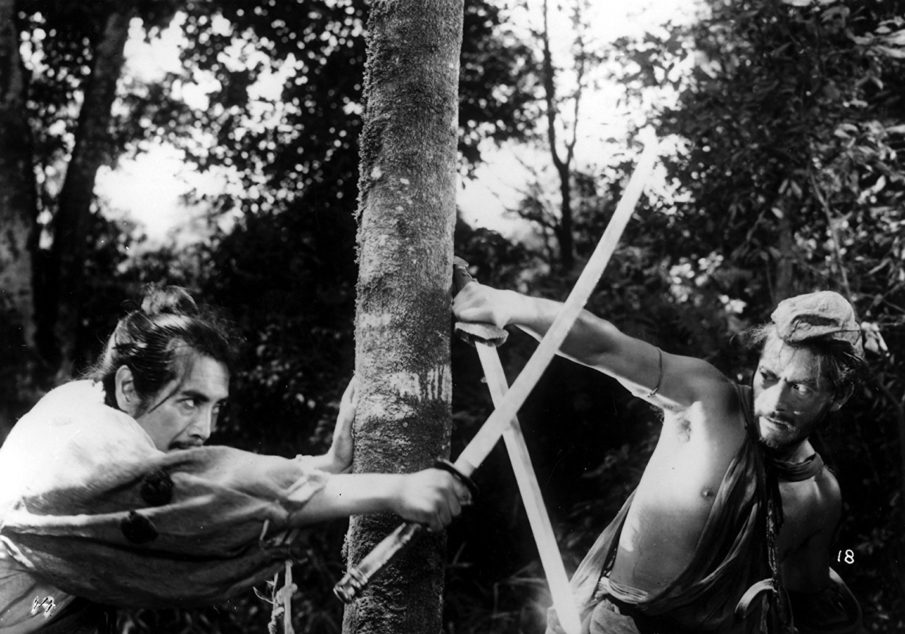This article contains spoilers — I highly recommend watching the movie before reading.
*Managing Editor’s note: Absolutely recommend, from my own point of view.
The legendary filmmaker Akira Kurosawa, who also made “Seven Samurai,” pioneered modern film in his mult-faceted “Rashomon (1950).” The film is primarily known for being the first of its kind: it tells a story from multiple points of view — in this case, the murder of a man in the jungle. Each witness kneels before a court and tells their story, and each tale is vastly different from the last.
At its core, “Rashomon” is about human nature and all that it is capable of. When you have multiple storylines playing out differently, with every single one of them having a horrific ending — not only does it feel like truth is far out of reach, but it also feels like human beings are not capable of goodness, any way you tell it. No matter what happens, it always winds up bad, or so it seems.
During the movie a priest, a commoner and a woodcutter are all recounting the court scenes, and the priest says that, “I don’t want to hear it. No more horror stories.”
The commoner responds, “They are common stories these days. I even heard that the demon living here in Rashomon fled in fear of the ferocity of man.”
These are the primary themes and ideas that make “Rashomon” an excellent film that has been considered by many to be one of the greatest of all time.
There are several aspects to this movie that also push it above and beyond — the performance of the bandit, played by Toshiro Mifune, the pioneering cinematography, the themes of justice and whether or not it is actually attainable, or the themes of women’s roles in older Japanese culture.
One facet stood out to me above the rest, though it certainly did not seem like Kurosawa’s primary focus. The film plays through all of these different storylines — a couple of them involve epic fights between the bandit and the man who was murdered. They face each other off, staring bravely and fearlessly as they circle one another. They then dive into combat, slashing blades, blocking and parrying, dueling with courage until the battle is won and one man stands victorious.
However, near the end we finally get a third-party eyewitness and he tells the audience what is generally considered the truth. And the truth is not a glorious battle between two brave men. It’s almost difficult to watch — the two are obviously terrified as they awkwardly chop blades toward each other, losing their footing and struggling to maintain grips on their swords. They shake and scrape through the dirt; they beg for mercy and claw at each other like animals.
I was surprised when I first saw this — it’s unusual seeing this kind of visceral, primal sense of realism from older movies, especially in a scene of combat. But it struck a chord, especially in direct contrast from the previous fight scenes in alternate tellings in the same movie.
This is the reality of combat. Perhaps their training could be better, and perhaps they could have cooled their heads in order to fight smarter, but even then the primary elements would still remain: chaos, brutality and a level of gritty physicality that many human beings never experience. Training simply allows you to operate among that chaos in a way that makes sense, and that has been proven to work — and yet those primary elements remain. Combat makes one aware of a level of “realism” that the fighter may not have known existed before, and certainly did not understand.
This is one of many ways in which “Rashomon” flourished. If subtitles and old movies don’t bother you, I would highly recommend it.
Images from IMDb.











COMMENTS
You must become a subscriber or login to view or post comments on this article.